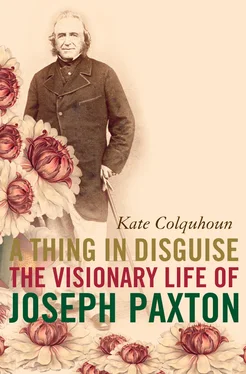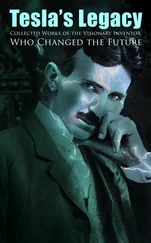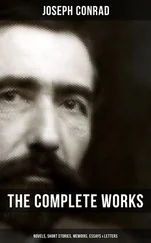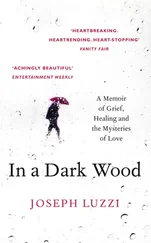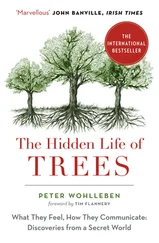At either end of the Palace stood Brunel’s magnificent towers, each 282 feet high, built to house the water tanks that fed the elaborate fountains in the park. As the fire sped south down the building, the alarm was raised that the south tower was under threat and a great race was on to save it. The tower was close to the houses on Anerley Hill and contained 1,200 tons of water and material used by the Baird Company in their television researches; if it collapsed, it would take many hundreds of lives with it. Locals were evacuated from their homes – one newspaper reported that a woman was not allowed to get her coat but was told to wrap herself in newspaper to keep warm.
By 10.30, the buildings near the south tower had burst into flames but the tower appeared safe. The fire meantime worked against the wind and attention now turned to the north tower. By 11.40, flames were breaking through the roof of the northern end of the building but, luckily, a large section of the north wing had been lost after the gales of 1861, creating some distance between it and the tower. By midnight the fire was burning itself out with no further threat to Brunel’s great engineering achievements. Only the two towers, the south wing and a portion of the north wing’s roof still stood, all enveloped in flame, white-hot. By three in the morning, though small fires continued to burn, the firemen packed up – over five hundred of them, more than a third of the city’s brigade.
The following day, hoarding was erected to keep out the crowds, though sightseers continued to stream to the hill. The Daily Sketch estimated that there had been over a million visitors to the site within the first two days – the number of visitors to the Palace in a normal year. One family travelled overnight from Yorkshire. In the City, shares in Madame Tussaud’s, Olympia and White City soared.
The biggest blaze in living memory, caused perhaps by a cigarette stub, perhaps by a broken flue pipe from the boiler in the office at the front of the Palace, had left only a tangled wreck of buckled iron and molten glass, with here and there the broken arm, head or leg of a statue, lodged at fantastic angles. Amazingly, not a single life had been lost. The Christmas shows were cancelled and the booking agents were in chaos. There was concern that a major venue for the May Coronation celebrations for Edward VIII had been lost.
The general manager of the Crystal Palace Company, Sir Henry Buckland, made it clear that he did not believe the Palace would be rebuilt unless the government stepped forward with at least £ 5 million. He dispelled reports suggesting that the building was fully insured, and confirmed that insurance was only purchased to the value of £ 110,000. Eighty-four years before, it had cost £ 1,350,000 to build.
With blind optimism, three days after the disaster, the first sod was cut for a new road-racing circuit on the lower terraces as the burnt-out hulk of the Palace loured in the background. But national and international events were to take precedence that week. As the fire had raged on that Monday night, Madrid had been severely bombed, fuelling concern about the escalating civil war in Spain. On Thursday that week, Edward VIII sparked a constitutional crisis by asking Baldwin to sanction a morganatic marriage to Mrs Simpson. A week later the King had abdicated and Mrs Simpson, the most talked-about woman in the world, was fleeing across France, chased by the world’s press.
The weekend after the fire saw the first snows of winter. The Observer called the site ‘the very genius of December’. The naked, straggling trees were mimicked by the curious masses of twisted metal, odd twigs of ironwork and fantastic growths of remnant glass. ‘The vitrified palace had become a petrified forest.’
Two months later, in The Architectural Review , Le Corbusier articulated the essential attraction of the glass building which, by some miracle, had remained as a last witness to an era of faith and daring: he wrote ‘one could go there and see it, and feel there how far we have still to go before we can hope to recover that sense of scale which animated our predecessors in all they wrought’. Before the fire, like many millions before him, he had not been able to tear his eyes from ‘the spectacle of its triumphant harmony’. His definition of architecture as a way of thinking, of achieving order and of expressing contemporary problems in terms of materials, was epitomised by the achievement of Paxton’s miraculous building – the first in the world to be constructed of mass-produced standardised parts and the first to use glass and iron on such a scale. The Architectural Review carried its own obituary to the building, describing this ‘colossal crinolined birdcage’ as no fossilised museum piece, but instead a precept as ‘inspiring as the Parthenon … as important as Stonehenge’. The building, it said, had liberalised architecture and provided the ‘first structural renaissance of architecture since the middle ages’.
Outliving all prophecies of structural disaster, the Victorian Valhalla, Thackeray’s ‘blazing arch of lucid glass’, one of the greatest memorials to Victorian engineering, architectural achievement and popular amusement, had sunk to her knees, all but taking the memory of her creator, Joseph Paxton, with her. Paxton was a gardener first and last but, as a pioneer among Victorian self-made men, he was part of a generation who thought of their own time as one of transition from past to future and who embraced the innovations of the day. His character sprang from the spirit of the age – determined by imagination, unremitting energy, motivation, and enthusiasm – a coupling of enterprise and ambition. Like many of his contemporaries, he appeared to be able to turn his hand to almost any task: an untrained engineer and architect, half-amateur and half-professional, he not only built the most perfect greenhouses in history but became the greatest horticulturist of his day. He was a revolutionary – the Crystal Palace was one of the most astonishing design and engineering feats of the nineteenth century. With his dogged single-mindedness, Paxton typified the bold new men with abundant creative energy who grew out of and formed the age of unparalleled industrial expansion, a quintessentially persevering pragmatist.
Yet, in 1936 a jarring, prophetic note was struck by George Bernard Shaw. Asked by the Daily Sketch what he thought should replace the Palace, he replied, ‘I have no wish to see the Crystal Palace rebuilt. Queen Victoria is dead at last.’ Without its raison d’être , the garden’s magnificent terraces and blaze of flowers languished and fell to ruin. The site has still to be redeveloped. The broken stone steps, one lonely damaged statue and several sad sphinxes witness only the creep of the brambles. A television transmitter towers starkly on the ridge. The sculptured bust of Joseph Paxton, erected in 1869 four years after his death, turns its back to the forlorn, now empty hill, looking away from the vanished glory of his intoxicating pleasure dome.
PART 1 EARTH
Milton Bryant is a small and pretty rural village some 50 miles from London, raised slightly above the Bedfordshire plain, modestly protected from change now, as it most certainly was in the early 1800s, by its position on the edge of the Duke of Bedford’s Woburn Estate. At that time the village formed part of the collected farms of the Woburn Estate, containing a manor house as well as a public house, a collection of cottages and gravel pits, a village pond and a Saxon church. Half a mile away is the site of a now vanished mansion, Battlesden Park, and a further 2 miles away is the market town of Woburn and its abbey.
Читать дальше
